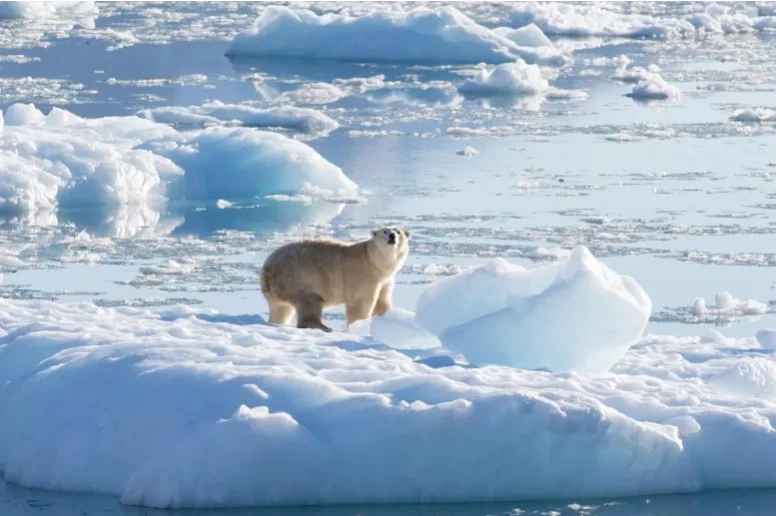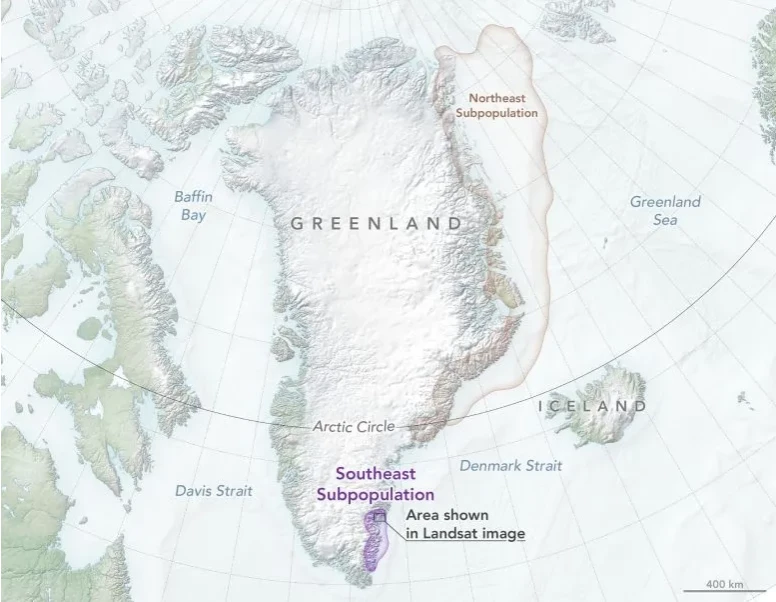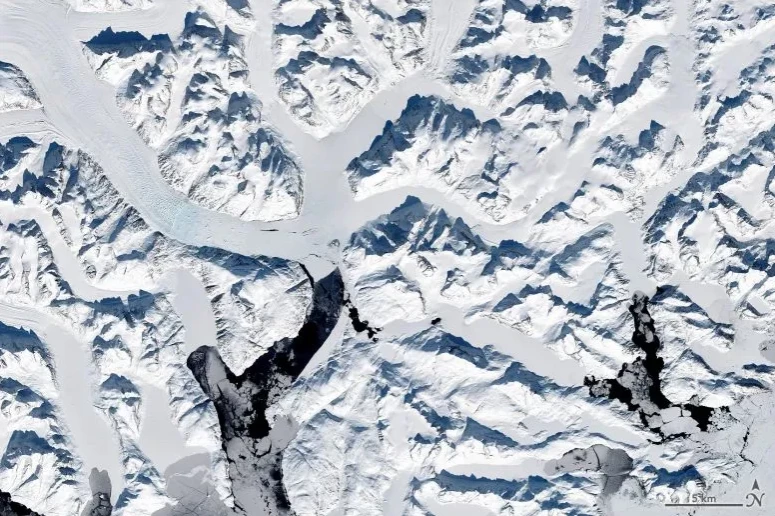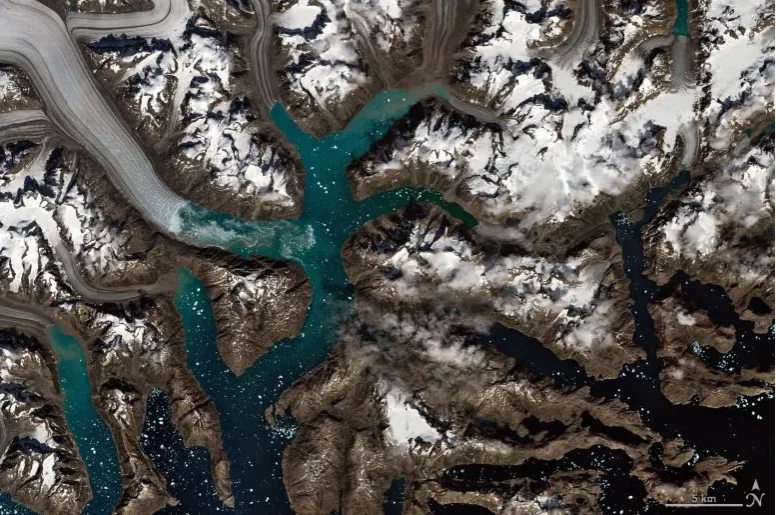NASA-funded researchers discover a unique subpopulation Greenland polar bears

A Southeast Greenland Polar Bear on glacier or freshwater ice at 61° North in September 2016. Photographed during NASA's Oceans Melting Greenland mission. Credit: NASA/Thomas W. Johansen.
Sea ice is a crucial platform for Arctic polar bears to hunt seals. Polar bears face difficulties finding ice to hunt as the Arctic sea ice is melting away due to climate change. Scientists discovered that the bears in Southeast Greenland can survive most of the year on ice melanges. This is a mixture of sea ice and glacial ice that has been carved from marine-terminating glaciers. The polar bear population has been separated from its Arctic counterparts for many hundred years and it has been proven to be genetically different.

Satellite tracking has shown that the Northeast and Southeast polar bear populations have distinct behaviors and are different. The tan area indicates that Northeast Greenland's polar bears cross large expanses of sea ice to hunt. The purple area indicates that Southeast Greenland's polar bears are more restricted in their movements within their own fjords and those of neighboring fjords. Credit: NASA's Earth Observatory.
A team of international scientists from Washington and the National Snow Ice and Data Center combined their seven-year-old bear tracking data with historical Greenland data over the past 30 years to create a new dataset that combines genetic analysis and historical data. The Moderate Resolution Imagine Spectroradiometer (MODIS) instruments aboard NASA's Terra satellites and NSIDC data were also used to document the fjords and offshore sea ice environments.
The findings showed that Southeast Greenland bears were cut off from sea-ice for two-thirds the year. They supplement their hunting with freshwater ice slabs which are regularly separated from the Greenland Ice Sheet or coastal glaciers. They also cross inland ice to travel between fjords and trek over mountains.
Kristin Laidre (University of Washington polar scientist) said that, "We knew there were bears in this area from historical records, indigenous knowledge and other sources." and "We didn't know how unique they were."

Shown here is the Tingmiarmiut fjord within the habitat of the Southeast Greenland polar bear population, in early spring left. This image was collected by the Operational Land Imager-2 on Landsat 9 on April 6, 2022. Credit: NASA’s Earth Observatory

Shown here is the Tingmiarmiut fjord within the habitat of the Southeast Greenland polar bear population, in summer. The white dots on the dark water are floating glacial ice that has broken off of the central Heimdal glacier and other glaciers in the fjord, which the bears use instead of sea ice to hunt. This image was collected by the Operational Land Imager on Landsat 8 on August 8, 2021. Credit: NASA’s Earth Observatory
Southeast Greenland’s sea ice resembles now what researchers expect ice conditions in Northeast Greenland will look like in the late 21st century due to climate change. These polar bears are genetically different and use strategies that may help them survive in a warmer world. The authors warn that glacier-ice cannot provide habitat for many bears because very few places release large amounts of glacier into the ocean. The majority of Arctic regions where polar bears rely on sea ice will see a decrease in their numbers.
This research was funded by NASA's Biological Diversity and Ecological Forecasting and Cryospheric Science programs, the U.S. National Science Foundation, and the government of Denmark, Greenland, and the University of Washington.
Twila Moon, NSIDC Deputy Lead Scientist, stated that this collaboration was crucial for the team's interdisciplinary research. She adds, "We consider cross-collaborations vital to address many pressing research issues related to our rapidly changing environment".
Reference: "Glacial ice supports a distinct and undocumented polar bear subpopulation persisting in late 21st-century sea-ice conditions" by Kristin L. Laidre, Megan A. Supple, Erik W. Born, Eric V. Regehr, Oystein Wiig, Fernando Ugarte, Jon Aars, Rune Dietz, Christian Sonne, Peter Hegelund, Carl Isaksen, Geir B. Akse, Benjamin Cohen, Harry L. Stern, Twila Moon, Christopher Vollmers, Russ Corbett-Detig, David Paetkau and Beth Shapiro, 16 June 2022, Science. DOI: 10.1126/science.abk2793
End of content
Không có tin nào tiếp theo
